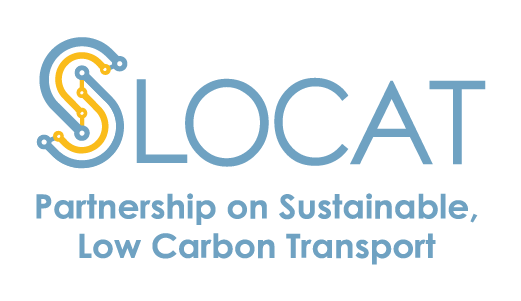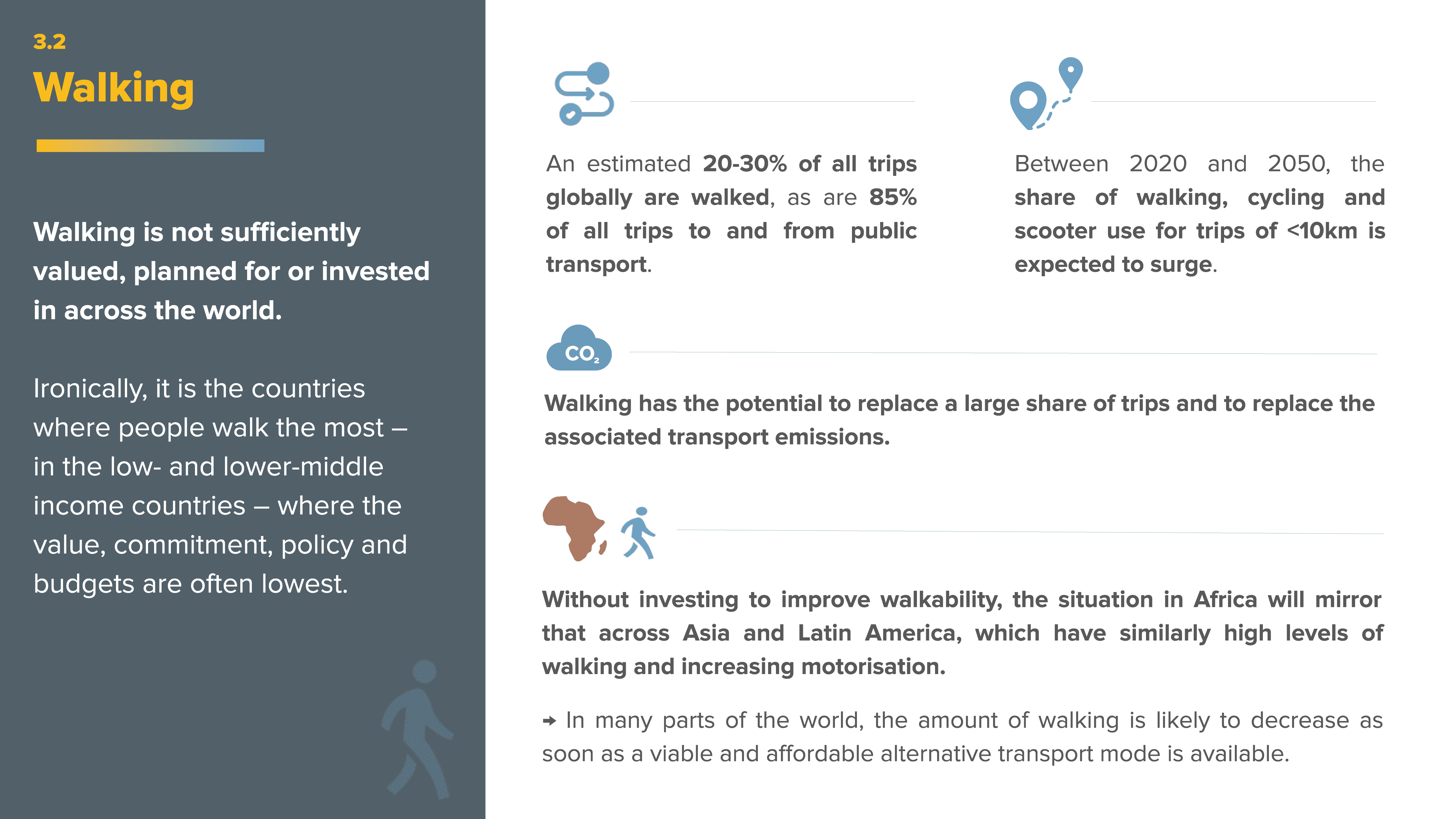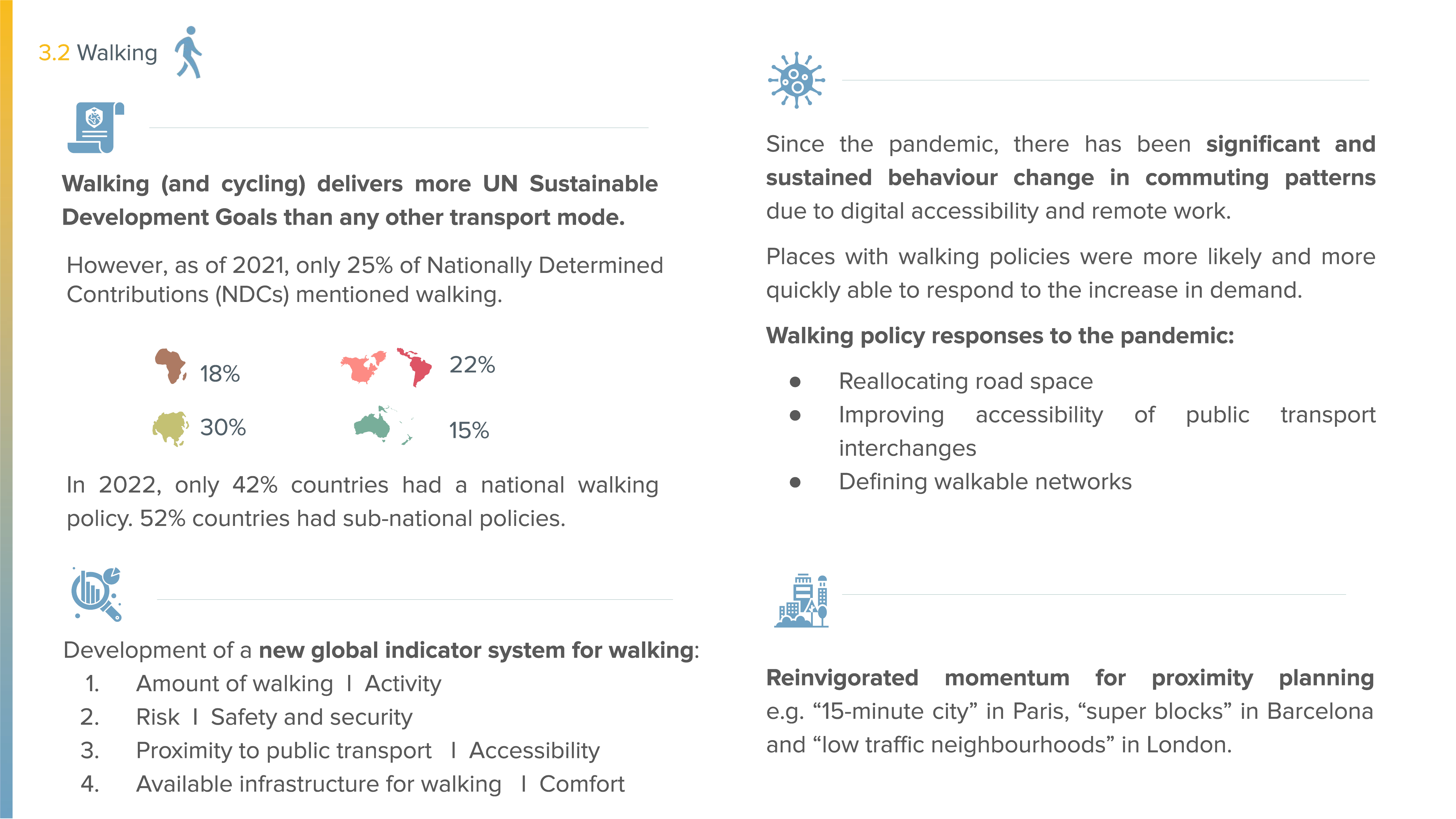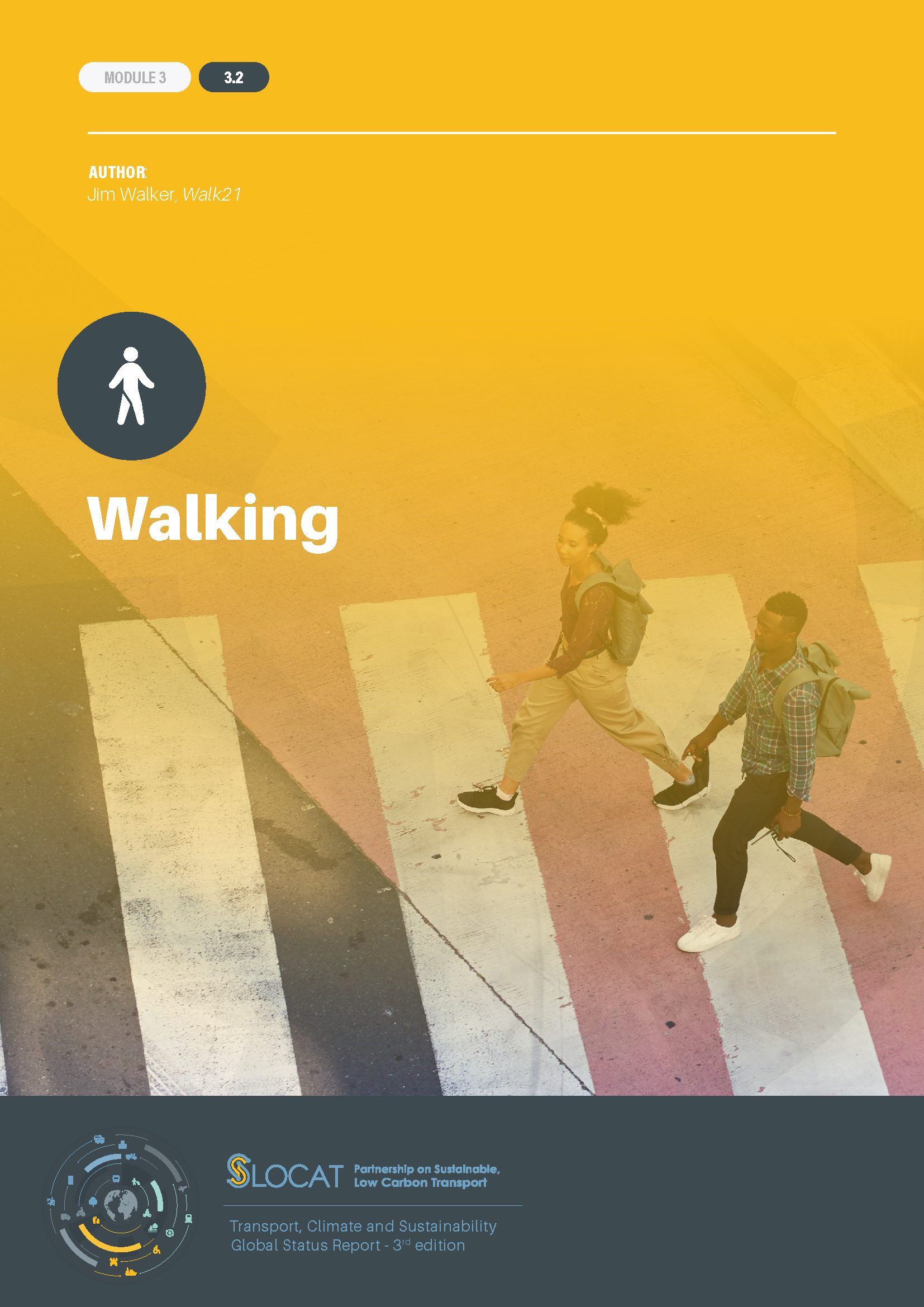-
Walking
- Key Findings
Demand trends
- The demand for urban trips is expected to triple by 2050. Between 2020 and 2050, the share of walking, cycling and scooter use for trips of less than 10 kilometres is expected to increase noticeably.
- On average, an estimated 20-30% of all trips globally are walked, as are 85% of all trips to and from public transport.
- Without investing in improved walkability, the situation in Africa will mirror that across Latin America and Asia, which have similarly high levels of walking and increasing motorisation.
- In many parts of the world, the amount of walking is likely to decrease as soon as a viable and affordable alternative transport mode is available.
- Walking has the potential to replace a large share of short trips and to reduce the associated emissions from transport.
- Since the COVID-19 pandemic, there has been significant and sustained behaviour change in commuting patterns, enabled by the increase in digital accessibility and remote work in many countries.
- Substantive discussion since 2012 has resulted in the development of a new global indicator system for walking. The indicators attempt to compare values for four key components: the amount of walking (the activity), the risk (safety and security), proximity to public transport (accessibility) and available infrastructure for walking (comfort).
Emission trends
- Walking and cycling are the most sustainable forms of personal transport. Enabling more people to walk and cycle safely can play a significant role in achieving climate goals and is a quick, affordable and reliable way to lower transport emissions while improving public health, strengthening the economy and supporting a fairer, more equitable society.
- The emissions increase from the shift from walking to motorised modes has not been calculated but potentially cancels out many of the benefits that can be delivered by policies that support a modal shift from cars to walking.
- Walking and cycling deliver progress towards more of the United Nations Sustainable Development Goals than any other transport mode; however, active mobility is still under-prioritised in the transport and mobility mix and in the wider climate agenda.
Policy developments
- More national governments, as well as regional and city institutions, are preparing walking policies, although only 42% of countries had a national walking policy as of 2022; up to 10% more countries had sub-national policies in place.
- Proximity planning – such as the “15-minute city” in Paris, the “super blocks” in Barcelona and the “low traffic neighbourhoods” in London – is experiencing re-invigorated momentum.
- As of 2021, 48 countries mentioned walking in their Nationally Determined Contributions (NDCs) towards reducing emissions under the Paris Agreement, representing 25% of the countries that had an NDC at the time.
- National and sub-national governments have increasing opportunities to align their transport, health and climate policies more closely to enable walking – including through safe and accessible infrastructure, campaigns and land-use planning.
- In 2021, governments of the pan-European region adopted the Vienna Declaration “Building forward better by transforming to new, clean, safe, healthy and inclusive mobility and transport”, with a strong focus on walking and cycling.
Author: Jim Walker, Walk21



